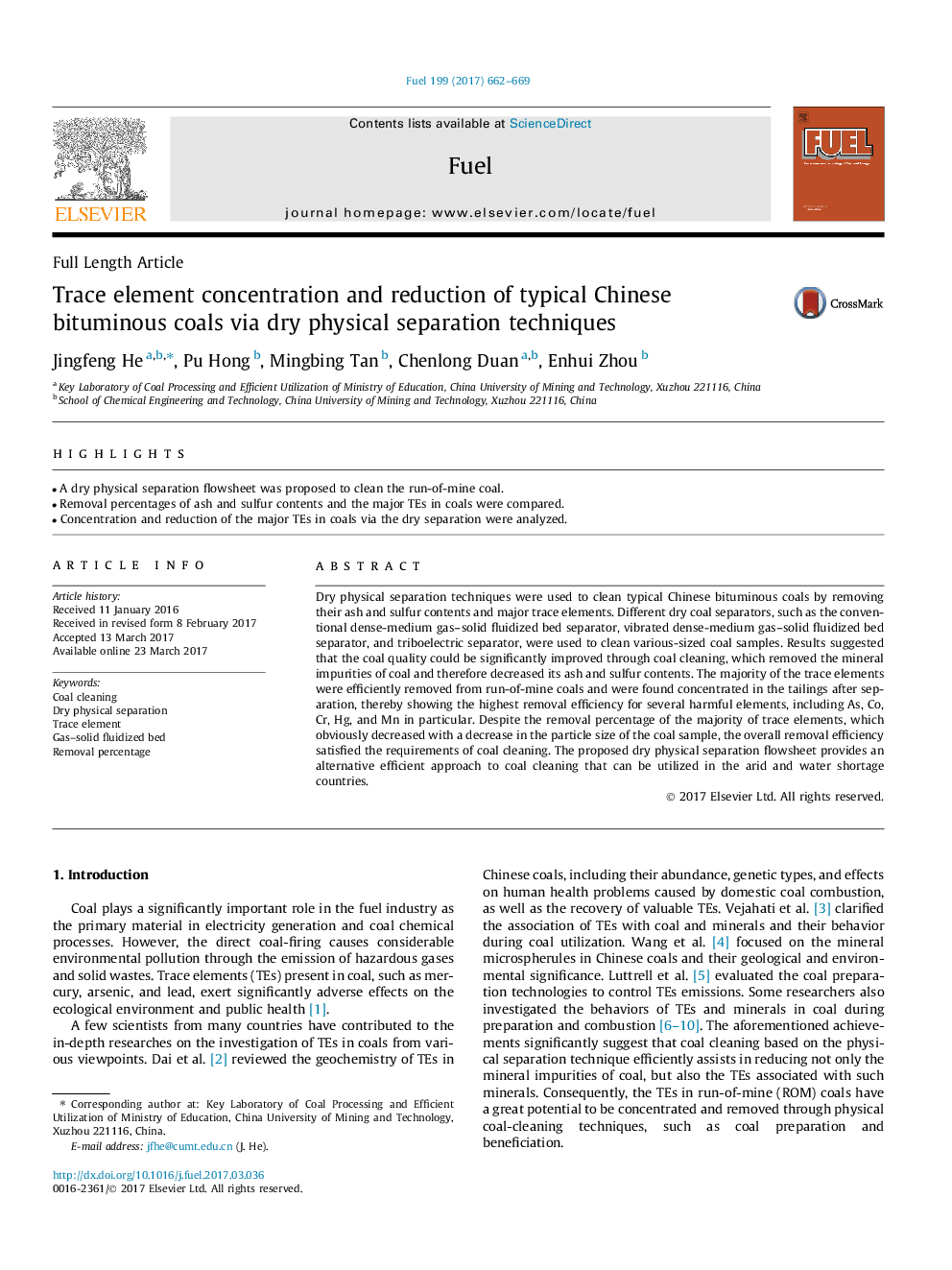| کد مقاله | کد نشریه | سال انتشار | مقاله انگلیسی | نسخه تمام متن |
|---|---|---|---|---|
| 6474865 | 1424965 | 2017 | 8 صفحه PDF | دانلود رایگان |
- A dry physical separation flowsheet was proposed to clean the run-of-mine coal.
- Removal percentages of ash and sulfur contents and the major TEs in coals were compared.
- Concentration and reduction of the major TEs in coals via the dry separation were analyzed.
Dry physical separation techniques were used to clean typical Chinese bituminous coals by removing their ash and sulfur contents and major trace elements. Different dry coal separators, such as the conventional dense-medium gas-solid fluidized bed separator, vibrated dense-medium gas-solid fluidized bed separator, and triboelectric separator, were used to clean various-sized coal samples. Results suggested that the coal quality could be significantly improved through coal cleaning, which removed the mineral impurities of coal and therefore decreased its ash and sulfur contents. The majority of the trace elements were efficiently removed from run-of-mine coals and were found concentrated in the tailings after separation, thereby showing the highest removal efficiency for several harmful elements, including As, Co, Cr, Hg, and Mn in particular. Despite the removal percentage of the majority of trace elements, which obviously decreased with a decrease in the particle size of the coal sample, the overall removal efficiency satisfied the requirements of coal cleaning. The proposed dry physical separation flowsheet provides an alternative efficient approach to coal cleaning that can be utilized in the arid and water shortage countries.
Journal: Fuel - Volume 199, 1 July 2017, Pages 662-669
